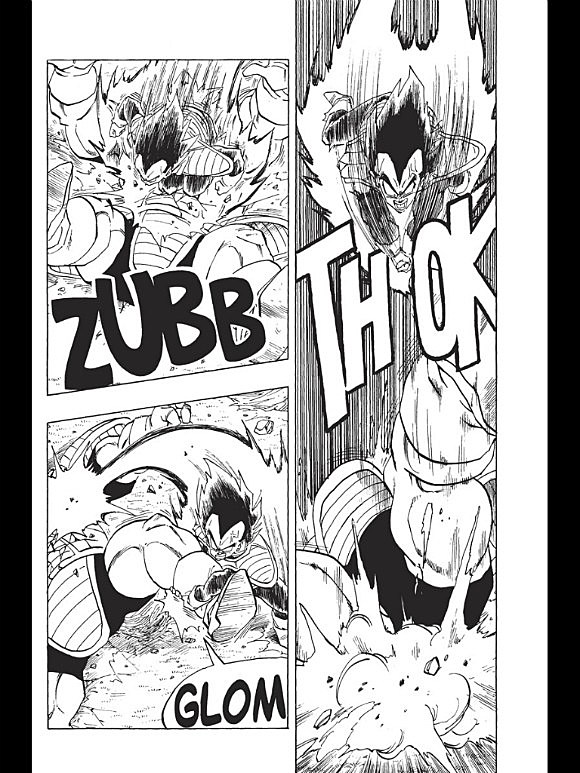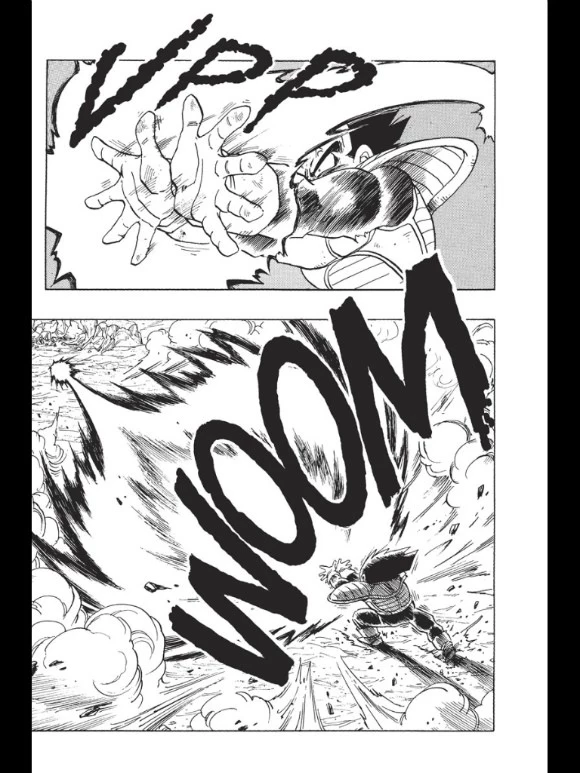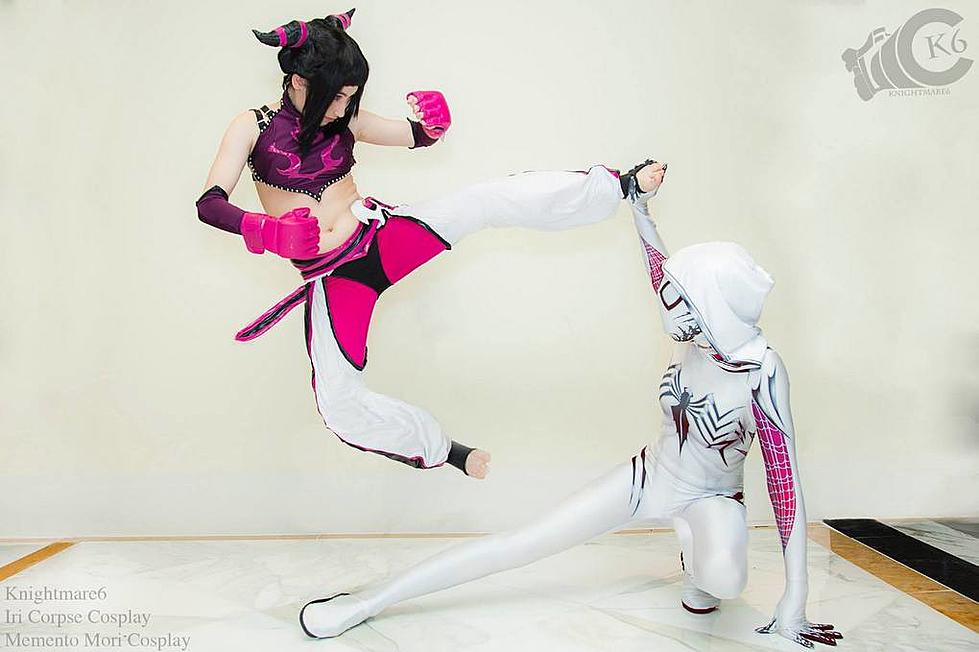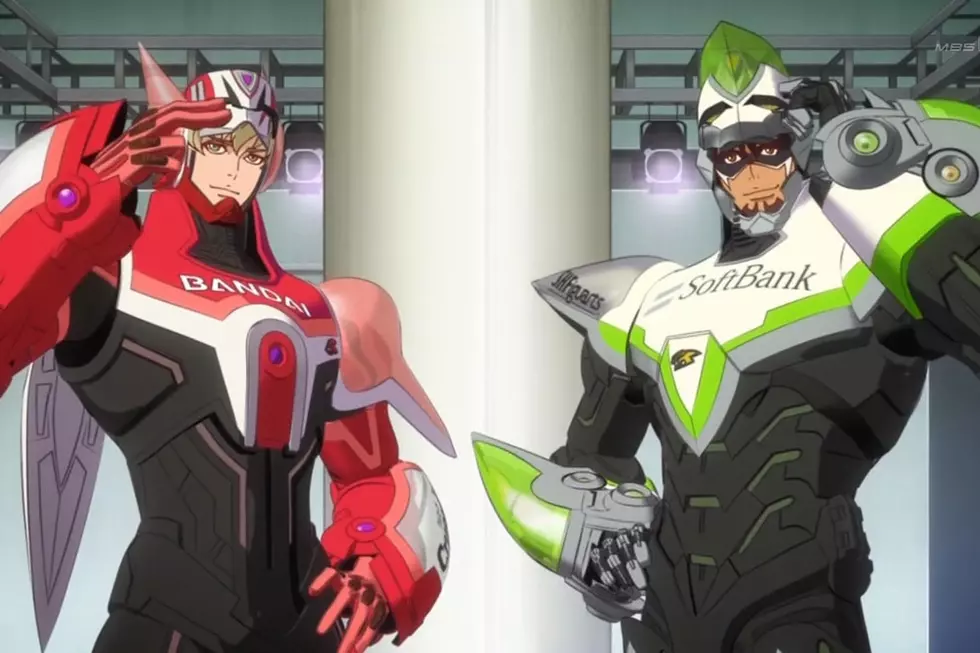
Akira Toriyama’s ‘Dragon Ball’ Has Flawless Action That Puts Super-Hero Books to Shame

Akira Toriyama's Dragon Ball franchise is the butt of a lot of jokes these days. I'm sure you know them: something something power levels, something something "It's over 9000!", and so on. It's a melodramatic series with incredible market penetration, so it's no wonder that it's easy as pie to find jokes about it. But did you ever stop to think about why Dragon Ball is so inescapable? Three television series, 17 feature films, 42 collected comics editions, thousands of toys, and dozens of video games don't appear out of thin air. Dragon Ball was, and is, super-popular for a few very good reasons. It's funny, exciting, and touching, with a fluid, blow-by-blow approach to action and violence that leaves most super-hero comics in the dust.

It's tough to overstate what a monster Toriyama created in Dragon Ball. An adventure-styled remix of the classic Chinese tale Journey to the West aimed at boys, the manga ran from 1984 to 1995, and provided the foundation for hundreds of millions, if not billions of dollars worth of merchandise. Check out the Wikipedia page to see how far Dragon Ball has spread, setting down roots all over the world. Dragon Ball references abound in pop culture as well, from idle jokes about spiky blond hair denoting strength to long-running memes about power levels.
Economic impact aside, Toriyama also managed to do something incredible: inspiredthe next generation of shonen manga artists. Masashi Kishimoto, creator of Naruto, and Eiichiro Oda, creator of One Piece, have been incredibly open about how Dragon Ball either made them want to make comics or provided inspiration for their main characters and plots. Like Osamu Tezuka and Jack Kirby before him, Toriyama created a story with his own two hands that seeped deep into the hearts of his readers, creating a love for the both the cast and the medium at the same time.

It's easy to see why. Toriyama's got a great sense of humor, with a sublime combination of Looney Tunes-style classic humor and dirty jokes. Even at its most serious, Dragon Ball is still full of food puns, dumb references, and active stupidity on the part of its heroes. The final boss of the series is named Boo. He's the slave of Bobbidi, who is the son of Bibbidi. Bobbidi also uses villains named Pocus and Dabura, as in "Abracadabra." You're supposed to take them seriously while reading, and they're definitely major threats who kill a lot of people, but as soon as you start explaining them to someone else, you're going to laugh.
Despite these formidable comedy chops, however, Toriyama is really, really good at action, and best part of Dragon Ball are the fights. This is especially true of Dragon Ball Z, in volumes 17 through 42 of Dragon Ball. There's a particularly good example of what I mean in Dragon Ball Z 7, during the fight between Vegeta, Goku's main rival, and Reacoom, a member of the Ginyu Force.

Fight scenes are a funny thing in comics. My main point of reference comes from American superhero tales, which tend to focus on the larger-than-life aspects of superhuman violence -- the punches that knock you through walls or eye-lasers that explode buildings -- instead of the point-by-point continuity of a fight scene. You generally don't see give and take in a fight. Heroes and villains exchanging blows? Sure, but you're going to need your imagination to fill in the blanks between Batman knocking Joker out and Joker swinging a crowbar at his head.
What's beautiful about Toriyama's action scenes, though, is that you don't have to do any real work to follow the action. He's a master storyteller, and it shows when he really lets loose with a fight scene. Where a lot of cape comics would focus on a series of cool poses or impact shots, each panel in Dragon Ball's fight scenes is dedicated to one action, and the next panel features the very next maneuver that character performs. It's visually fluid, and very easy for your mind to fill in that blank and view the transitions between panels as the blow-by-blow progression of a fight. Everything that follows has a clear precedent, and it reads like tipping over a line of dominos.

My favorite part of the scene included with this post is the hand-to-hand action. Pay attention to Vegeta's limbs. From the very beginning, Toriyama is setting up the next panel. Panel 3 on the page with the Ginyu Force talking about Vegeta's power level gives way to panel 4, with Vegeta's arm cocked back. On the next page, Vegeta's right hook knocks Reacoom's head to his right, where it stays while Vegeta accelerates up, over, and back around toward Reacoom. Vegeta locks both fists on the last panel on that page, slams Reacoom to the ground on the next, and then stomps on his stomach.

This feels really obvious when you look at it, but it has a more subtle effect when you're reading, rather than examining. The rapid-fire cause-and-effect, progressive storytelling has a cumulative effect greater than the impact of reading a book that has a handful of random, but sequential, attacks in a fight scene. While a particularly brutal looking uppercut may elicit a gasp or grin, seeing someone get punched, smashed, stomped, tossed, and then exploded is way more painful and viscerally thrilling. It adds another level onto the action due to its verisimilitude. The more Toriyama shows, the more real the scene seems and thus, the more we believe in it.
These are fights that you fall into, rather than just observe. Attachment breeds true fans, and, properly executed, comics can stab right into the deepest parts of your heart. These fight scenes are memorable, and that counts for a lot. They're not just memorable, though. They're simple. Toriyama might employ some dynamic angles or esoteric attacks at times, but by and large, his fights are incredibly easy to follow. A child could follow them, and millions of children have done exactly that. That isn't a knock on the fights at all; their beauty is in their simplicity.

You can start reading Dragon Ball at the beginning, which features Son Goku as a child in a more humor-oriented tale, or with Dragon Ball Z, which explores Goku's life after growing up and getting married. DBZ is more action packed than DB, but both are fun, fine comics.
More From ComicsAlliance









